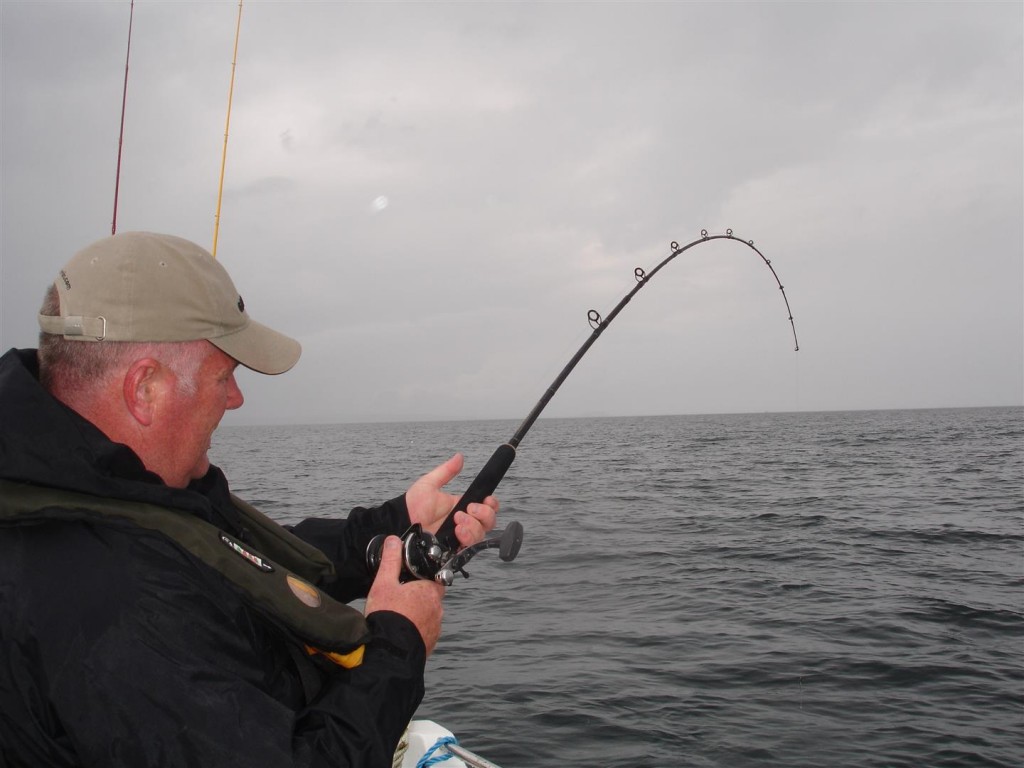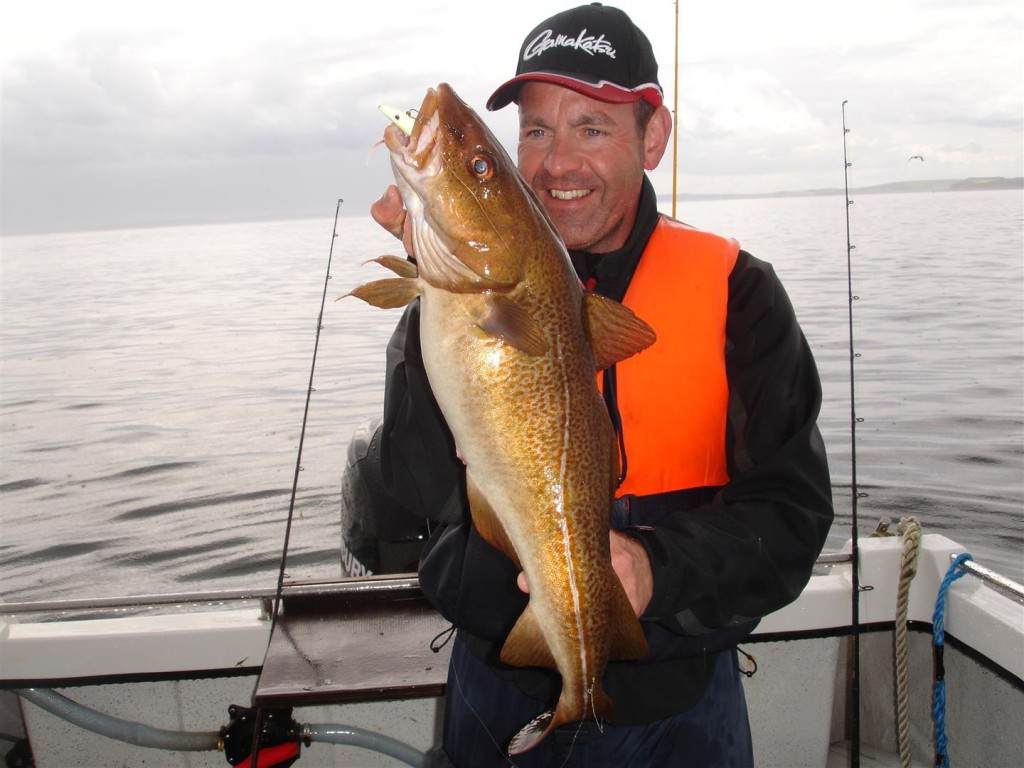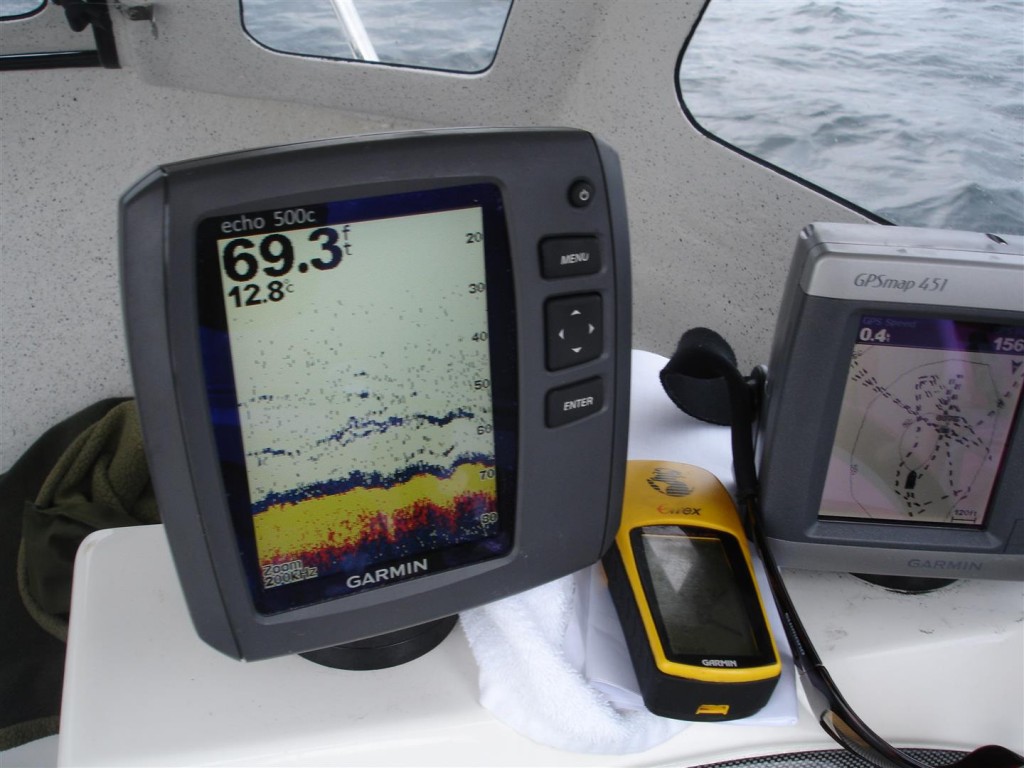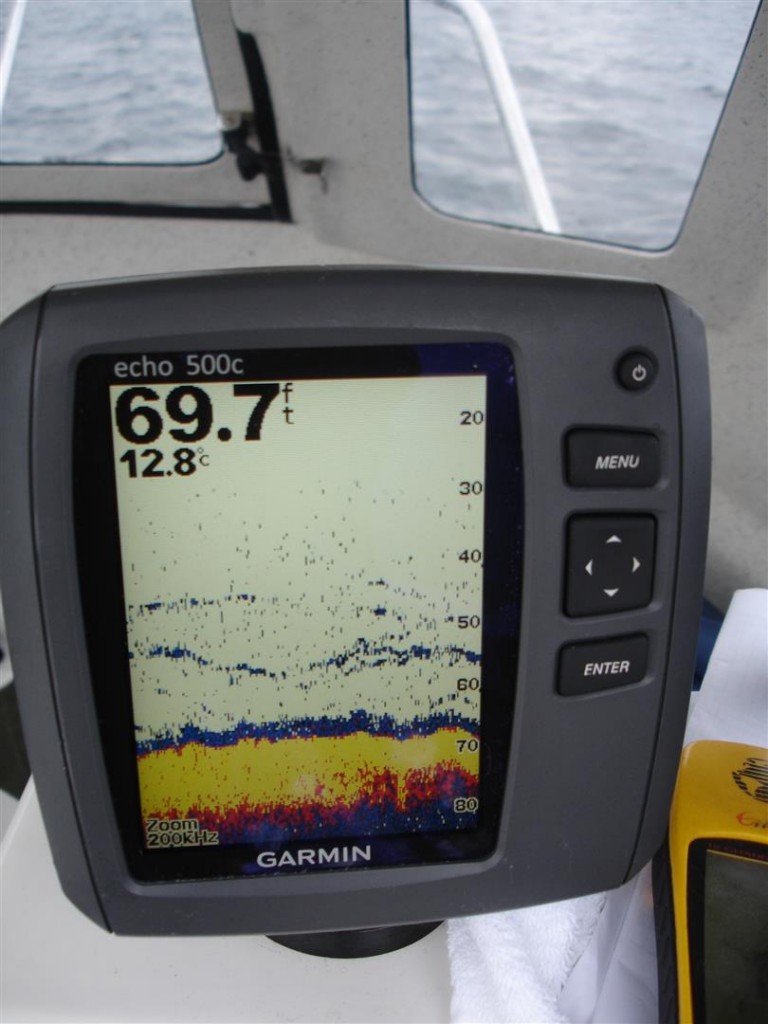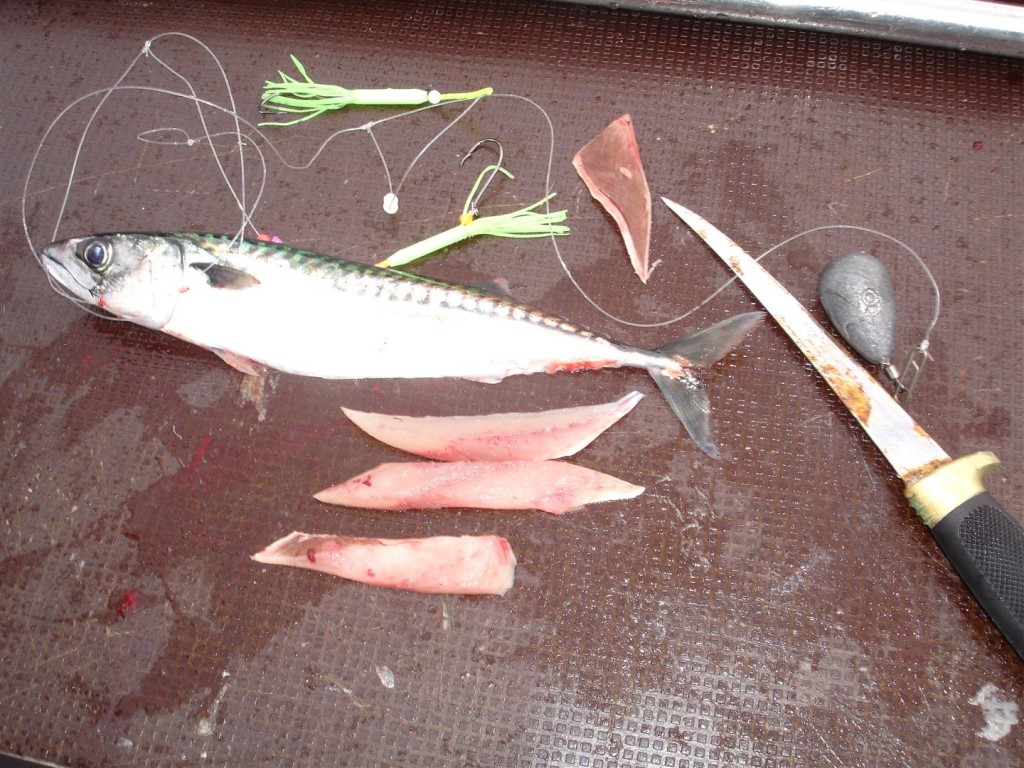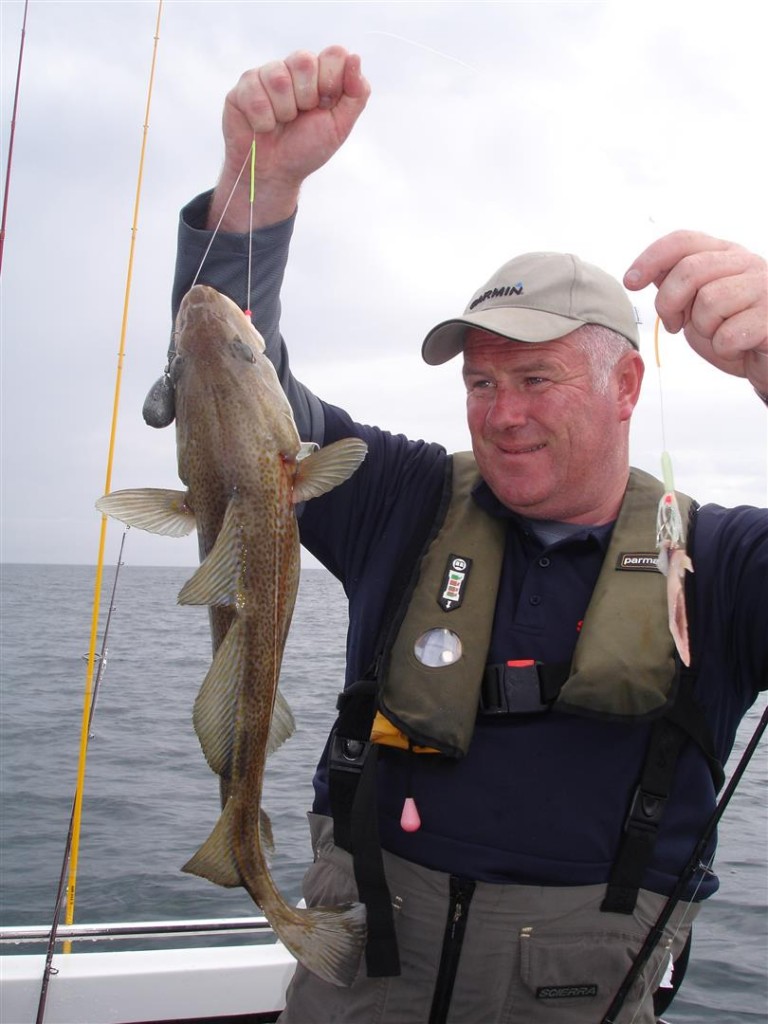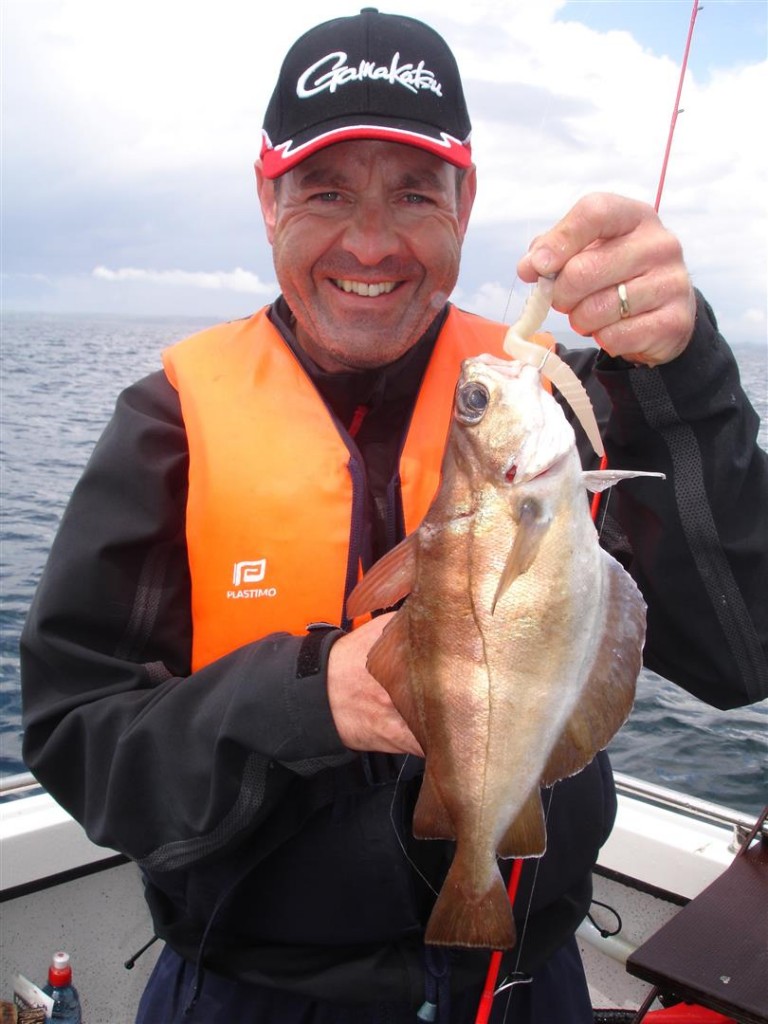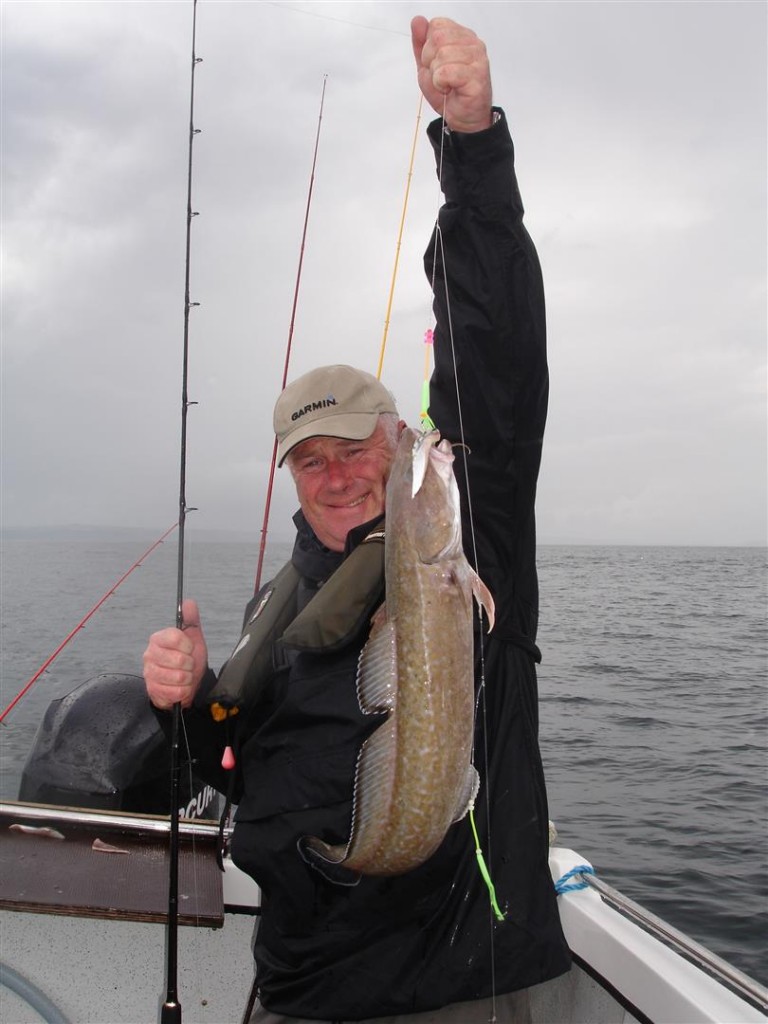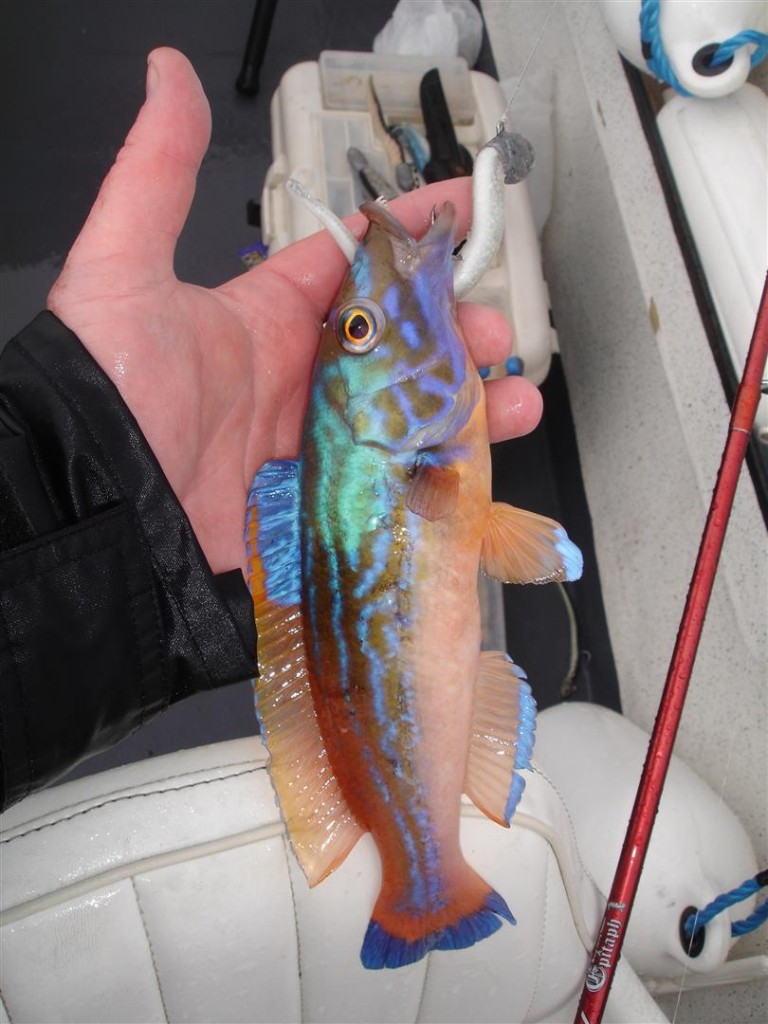What items make the difference on your dinghy, increasing catches as well as looking the part? Jim Clohessy reviews some of the elements that combine to make a difference on every boat angling trip.
(Click on any picture to enlarge)
This feature started life as a comparison between catch rates using soft plastic lures and bait – a simple test really and something that I’d wanted to investigate for a while now. I’m convinced that soft plastic lures have made a significant difference to my bass fishing, but what about the “normal” fishing that we do in between fishing for the silver fellas? Okay, let’s face facts here – lures will never replace bait for all fishing. There are some species that will always be the preserve of bait. There are certain times that bait will always be the preferred option. There are many sceptical anglers out there when it comes to lure fishing for some of the traditional species that were usually targeted with bait. Then you delve deeper and wonder about the ultimate aims of the average angler. Is the objective to catch as many fish as possible? Do you judge the day out in terms of enjoyment and sport more than volume of fish? Maybe you are a species hunter and one day out is compared to another in terms of the number of different species that you’ve managed to capture? Maybe you’re driven by the quest for a specimen fish? No matter what your preferred style or species is, read on – it might offer food for thought in the way you approach your fishing!
The Test: Part One
So a test of sorts was required – Lures V Bait. The test was never going to be complete and outright battle, as bait would surely win overall. The test would be carried out over what I would consider to be a fairly normal outing in a small boat, the sort of outing that the majority of skippers would take week in week out during the summer. No lofty hopes of specimen fish or double-figure species counts – just a simple trip to get some fish over the gunnels and have a bit of craic in the process. The aim would be to get amongst the fish – in other words we would be happy that there were fish around first – and then we would let the test begin. Again in bait terms we were not going to bring a huge range of baits to target specific species. On an average trip out most of us use mackerel, and only bring worms or crabs when we have a specific species or mission in mind. So to be fair I would use fresh mackerel only. So you get the picture – this would be a comparison of “normal” bait fishing to “normal” soft plastics fishing for common species that most of us catch while drifting over reefs.
Kevin Murphy and myself headed for sea on a day that we would have liked to be bass fishing. It was a typical Irish summer’s day – warm in the sunshine but cold in the incessant squalls that passed over us with disappointing regularity. Still, it was a perfect day for “normal” fishing, with enough breeze to give an ideal drift over the reefs we planned to fish. We cruised to our first mark and nearly forgot to stop occasionally to catch a few mackerel! It was here that we discovered the first stumbling block. As the summer season gets into gear the chances of us bringing some frozen mackerel as a backup decreases. We spent the best part of an hour locating a half dozen mackerel. It was frustrating, as we would normally be fishing at this stage. Instead we were cruising around like madmen dipping here, flicking there and working hard to locate some bait. I refuse to let this colour our test, we were probably less in tune to the location of mackerel that we would normally be. As the summer passes the mackerel should become easier to locate and less of an issue for the skipper out for a day trip. Surely we will not suffer because of the mackerel madness going on in the North Atlantic? It was nice to eventually catch enough for bait and a few for the accompaniment to a nice summer salad and we continued to our first reef mark of the session.
Next Generation Electronics – Fad or Fixture?
There have been major breakthroughs in the area of marine electronics – sounders to be more specific. High Definition (HD) is a buzz-phrase that tends to have been diluted in terms of its impact. We hear HD being used for everything from cameras to televisions, so it’s easy to see why the term gets ignored when it comes to the humble marine sounder. However, the result of HD in sounder technology is astounding and certainly can make the difference to your fishing. I’ve been a Garmin user for years. I changed over after a run of technical problem with other makes and to date I have yet to have any technical issues with the Garmin units I have owned.
The Garmin name is synonymous with GPS. They certainly paved the way with units that are easy to use and this ease of use continues across the range of Garmin sounders. Last year I changed my FF250C for the one of the new Echo units, the flagship 550. To say that these sounders are a huge leap forward is an understatement! Firstly, they are standalone sounders. They do not interface with your GPS. I know few anglers that connect their GPS in the first place and I know fewer who manage to use the connection for any purpose to help angling. I am no technical guru, but safe to say that increases in processing power combined with modern screens make for a sounder with resolution that is excellent.
I followed up my Echo 550 with the smaller, less powerful, Echo 300 fitted on my inflatable that I use for inshore bass fishing and general messing around. These are dual beam units rather than dual frequency. Basically, you can only use one frequency at a time other than in split screen mode. I would not be lying when I say that I can “see” more fish on the screen, sometimes it is downright scary. Garmin’s “HD-ID” provides excellent results on screen. If you’ve never seen your sounder show the fight of a fish from bottom to surface then you need to get a look at an Echo. The range is very competitively priced. The 300 can be purchased for around €220. That is some value for a colour sounder that will as comfortable on a kayak as on the average small angling boat. The 500/550 is more expensive and more powerful to boot. It is the perfect unit for the skipper who travels into deeper waters. Almost everybody who has fished with me and seen the Echo in action has ended up changing their sounder – HD sounders? Fixture not fad!
The Test: Part Two
We arrived to our first reef and began to drift. The sounder showed an amazing amount of fish hanging over the top of the reef, but they turned out to be small coalfish. It was well nigh impossible to catch anything else, as the coalies savaged anything that moved. We had little option but to move to another reef. Our next stop showed fewer fish, but this looked more interesting and soon we had a steady stream of pollack and cod. It was time to begin our friendly competition. Kevin tooled up with plastics whereas I retrieved a homemade two-hook paternoster from my box. I baited up with slivers of fresh mackerel, attached a 6oz lead and dropped my trace over the side.
Cod were the target. This reef tends to hold a few all year round. There was little point in allowing pollack to count in our competition as I would not normally use a baited trace for pollack in any case. Kevin was using a light leadhead teamed with a pink Illex Nitro soft lure. No sooner had I touched down than I had a bite and I nearly forgot to strike – with soft lures the take is generally more vicious and it’s not often that you have to strike, more a lift to set the hook firmly. It was a small ling. While I was landing this fish Kevin struck back with a nice cod of around 8lb. Kevin seemed to get far more value for his fight on his light rod. I was fishing light enough – a Diawa Kensaki 6-12lb rod teamed with a Penn 525 reel – but I looked wistfully as Kevin’s rod bent over nonetheless.
The pattern was repeated over and over again as we had a few fish on each drift. We began to pick up some other species, but the surprising thing was that once Kevin started to vary his lures and his techniques he began to catch more than the ubiquitous cod. Bait accounted for wrasse, poor cod and pouting – but so did the soft lures! We fished for a solid hour. The shocking thing was there was little or nothing between the lures and the bait. I would have expected bait to win hands down. On the cod front, Kevin had more and bigger fish than me. I caught more and bigger ling than Kevin did, but I think I would prefer to be catching cod!
So, over the course of the hour there was little to separate the lures from the bait in a situation of general reef fishing. I think this would surprise most anglers. You must remember the criteria used for the test: we were recreating the situation of “normal” pleasure fishing, the sort practised by the majority of skippers around the coast. We were competing, but we were not competition fishing. I must say I had my own ideas about the test results before we started. In this case we confirmed that fishing different techniques with soft plastic lures can yield as many fish as a typical bait setup. I had not fished with bait all through the winter and spring. Going back to bait was refreshing, but I missed the lightness of my lure rod and I definitely missed the more aggressive hits that soft lures tend to encourage.
I would advise any doubting Thomas’s out there to give it a try. The cost of entry is not huge. Yes, you can spend a lot of money on a decent designed-for-purpose rod, but for a start there are many cheap but good rods out there. Take a look at the Surecatch Salty Spin, the Bushwcaker from Savage Gear, the Vengance from Shimano or any of the other 2.1m rods that have started to appear in your local tackle shop. You probably already have a spinning reel lying around. You will have to invest in some braid, in order to benefit from the feel that Dyneema brings. Jig heads are popular in nearly all tackle shops at this stage so grab some from 20-80g. The choice of plastics is getting daunting. You cannot go wrong with any of the Illex range. Go for the cheaper packs at first, no point in wasting money on the more expensive makes – pollack and cod are not that fussy! Get a mixture of paddle tail and “stick” versions as each will have its day and on some days the paddle tail will outfish all others. I like lures with a small paddle tail. The point is that it takes very little movement to get the paddle tail swimming. Sometimes that wiggling tail proves to be irresistible! Also a stick-type lure will have less drag and will hold the bottom better. The best part of the experiment is that even if you do not take to lure fishing the rod you buy will be a revelation when it comes to chasing after smaller species like flounders or even mullet. You will get use from the setup chucking spinners and plugs from the shore. The right rod will be an all-rounder that you will use time and time again.


